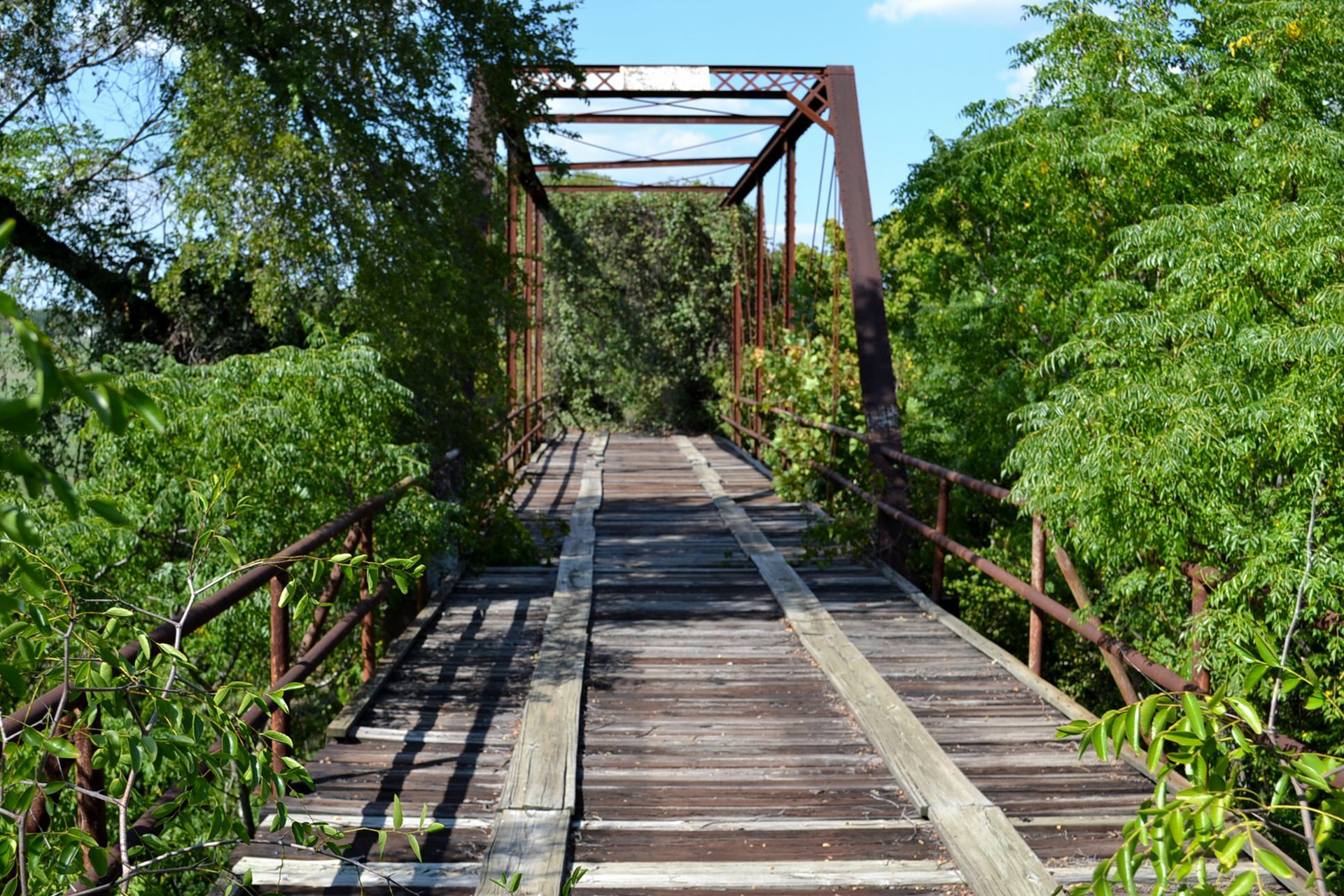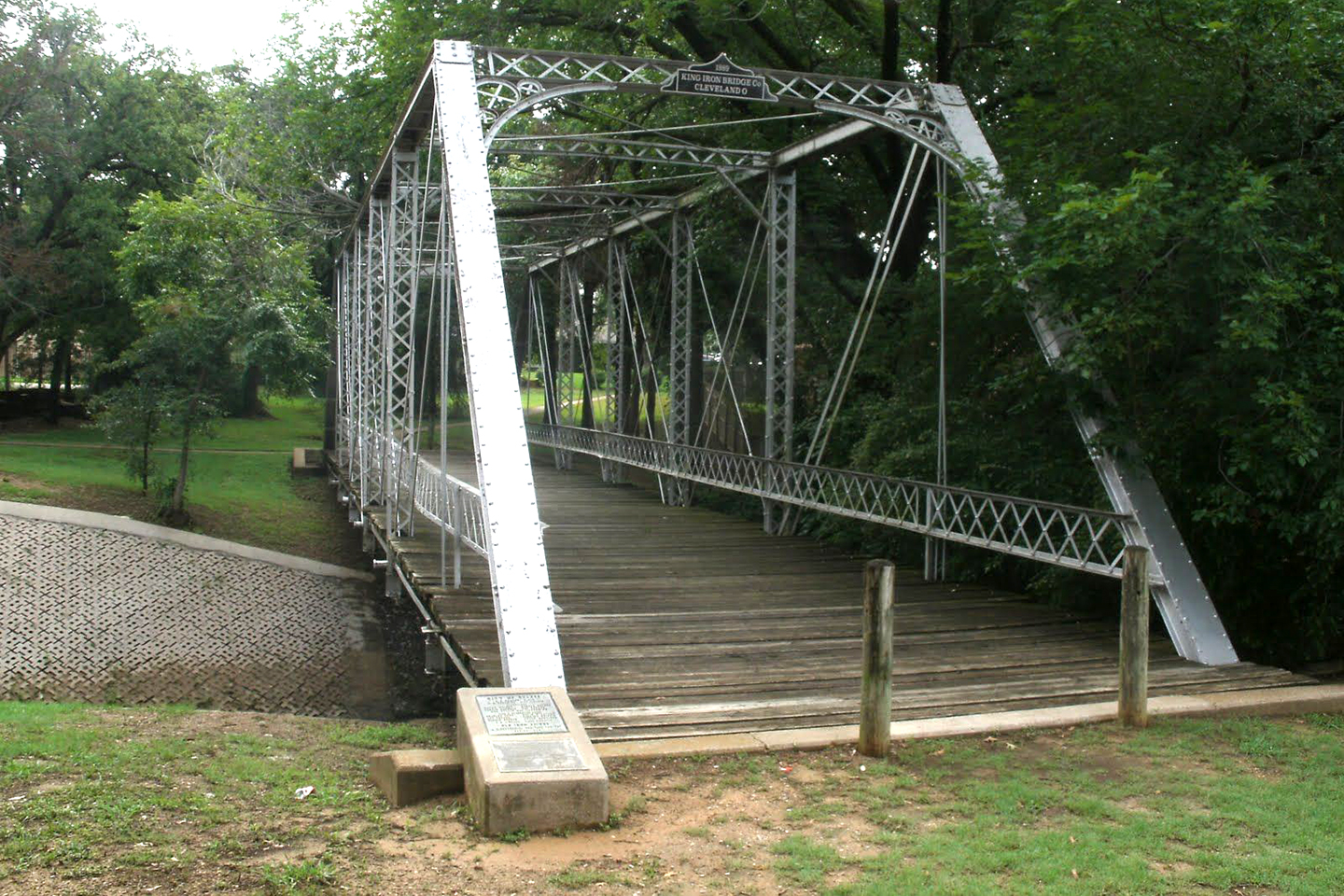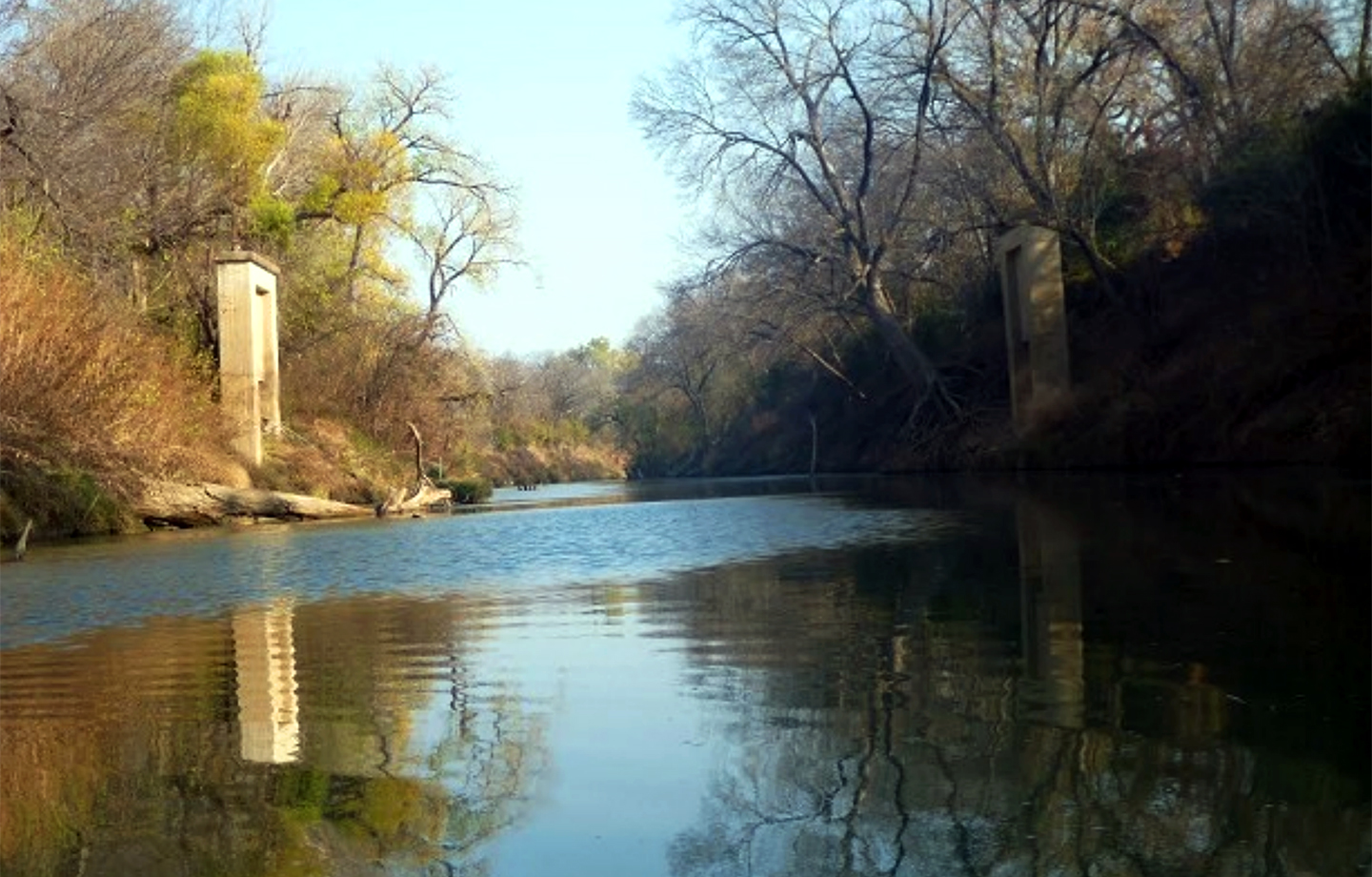
They were Old When They were New
There was a time when iron truss bridges dotted the landscape of North Texas. You could literally throw a rock and hit one—that’s how common they were. They spanned all areas of the Trinity River in any town around Dallas and Fort Worth. Major rivers had them, creeks had them. They were landmarks in towns like Mansfield (Holland Road Bridge), Euless (Bear Creek Bridge) and Lewisville (Ritter Bridge).
Manufactured in cities like Cleveland, Kansas City, and Austin, they were state of the art for the time and connected rural areas. They were literally a lifeline to other communities with the majority going up between 1910 and 1930 and they were celebrated with much fanfare. Bonnie and Clyde crossed these bridges in their flights out of town, escaping the law. They were the only way in and the only way out. The harsh summer and unpredictable winters took a toll on these bridges and made them look older than they were. They looked idyllic from a distance, but up close showed their wear and tear. They looked old even when they were new.

The growth of the DFW area in the 1950's made these bridges obsolete. They could not handle more than one car at a time and their weight limits were stretched thin by the weight of all the new Plymouth's, Chevy's and Ford's on the roads. Some lasted into the 1960's in the more rural areas, like far north Arlington, but they were on their last legs. Reinforcements and "band aids" typically did not last long and the county slowly started taking them down. Replaced with common concrete and state of the art guard rails, the new bridges were more stable, but they lost their identity.
The Arlington area had several iron truss bridges. The gravel pits that once dotted what is now River Legacy Park had several. Built for the pits, these truss bridges were for railroad spurs that spanned the Trinity. Walking along the northern paths of the park by the river, you can see enormous concrete piers that once held these bridges (photo below by M. C. Toyer).

Under the darkness of Lake Arlington lies the Village Creek Bridge. When the lake was constructed in 1957, this truss bridge went down intact and still lies on the bottom. The USGS aerials even show the bridge slowly being consumed by the water. Unlike the Interurban tracks that ran parallel to the T & P and the Bankhead Highway during World War II, the metal from the truss bridge was not deemed useful or necessary because of the times. There was no war effort and the new roads and highways being built at the time did not abide by the same construction standards of years past. It was just “there” and forgotten. Wilbarger Street to the north of the lake and Poly-Webb Road to the south connected and were known as Bowman Springs Road before the lake went in. Right in the middle of the road was Village Creek Bridge.
The Bedford-Arlington Bridge spanned the Trinity along what is now Greenbelt Road. The current concrete bridge is the third bridge at this site. The original bridge was lost to a flood in 1915 and no known photos exist. The replacement bridge was a truss that stayed in place until the early 1970’s. Before the road was paved, it had what the locals called “hiccups”, which were bumps up and down the road. The old truss served the clay road well for years and years, then time finally ran out.
Improvements have made our roads and bridges safer, but, with that comes monotony. Everything looks the same. Gone are the truss bridges with their lattice work and cables, each one with something just a little unique to set them apart.
Sometime, when out in the country, look to the left or right when going over a river or creek. Every now and then you’ll get lucky and see a ghost there, a weathered skeleton of a bridge built with pride that connected a community.
There are still many of these bridges standing in places like Milford, Argyle, Valley View, and McKinney. These relics are important to our history. It’s too bad that we only now recognize it.
